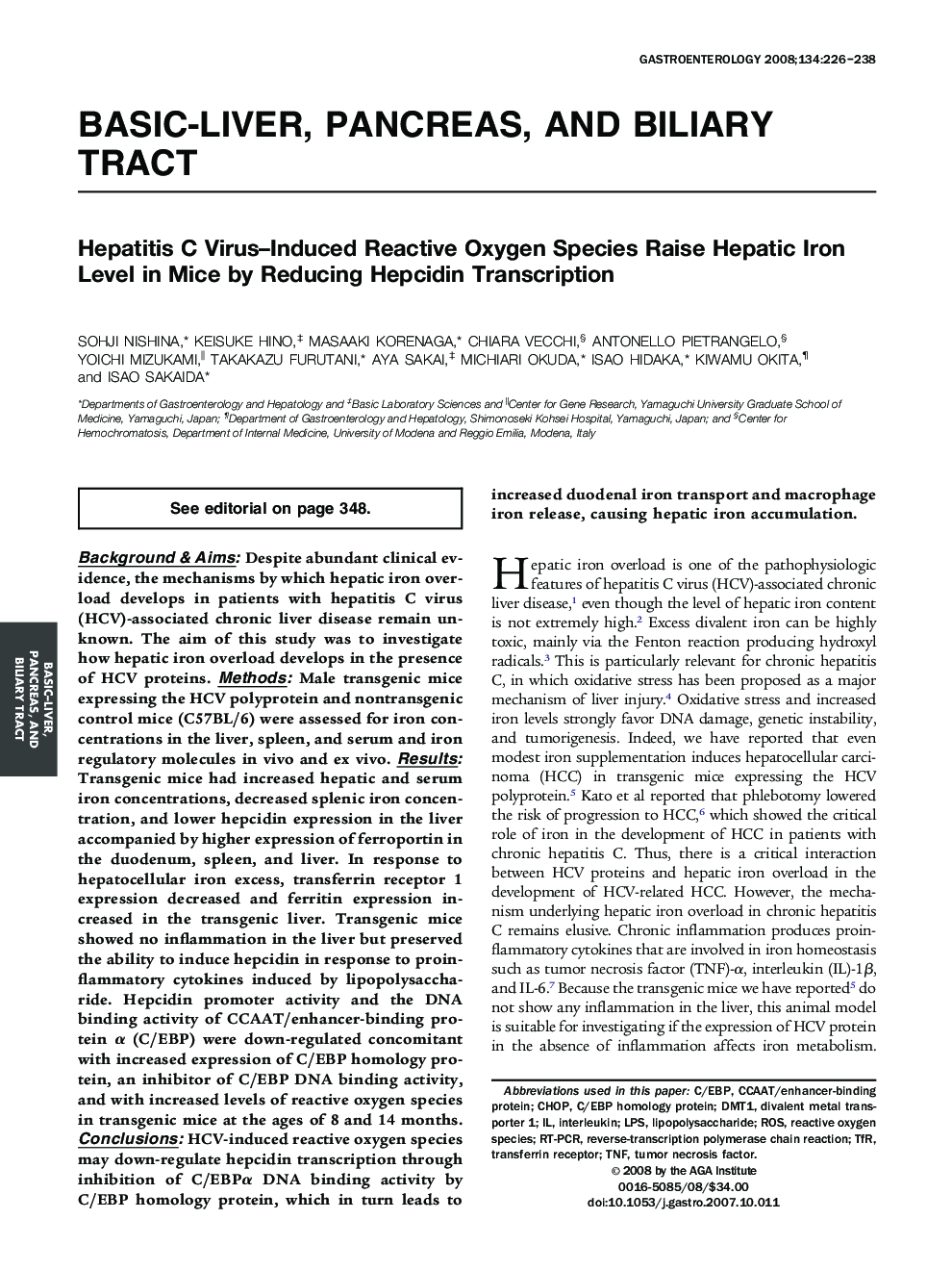| کد مقاله | کد نشریه | سال انتشار | مقاله انگلیسی | نسخه تمام متن |
|---|---|---|---|---|
| 3297477 | 1209885 | 2008 | 13 صفحه PDF | دانلود رایگان |

Background & Aims: Despite abundant clinical evidence, the mechanisms by which hepatic iron overload develops in patients with hepatitis C virus (HCV)-associated chronic liver disease remain unknown. The aim of this study was to investigate how hepatic iron overload develops in the presence of HCV proteins. Methods: Male transgenic mice expressing the HCV polyprotein and nontransgenic control mice (C57BL/6) were assessed for iron concentrations in the liver, spleen, and serum and iron regulatory molecules in vivo and ex vivo. Results: Transgenic mice had increased hepatic and serum iron concentrations, decreased splenic iron concentration, and lower hepcidin expression in the liver accompanied by higher expression of ferroportin in the duodenum, spleen, and liver. In response to hepatocellular iron excess, transferrin receptor 1 expression decreased and ferritin expression increased in the transgenic liver. Transgenic mice showed no inflammation in the liver but preserved the ability to induce hepcidin in response to proinflammatory cytokines induced by lipopolysaccharide. Hepcidin promoter activity and the DNA binding activity of CCAAT/enhancer-binding protein α (C/EBP) were down-regulated concomitant with increased expression of C/EBP homology protein, an inhibitor of C/EBP DNA binding activity, and with increased levels of reactive oxygen species in transgenic mice at the ages of 8 and 14 months. Conclusions: HCV-induced reactive oxygen species may down-regulate hepcidin transcription through inhibition of C/EBPα DNA binding activity by C/EBP homology protein, which in turn leads to increased duodenal iron transport and macrophage iron release, causing hepatic iron accumulation.
Journal: Gastroenterology - Volume 134, Issue 1, January 2008, Pages 226–238